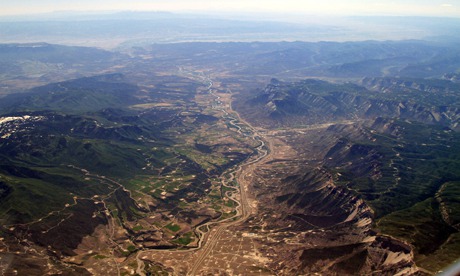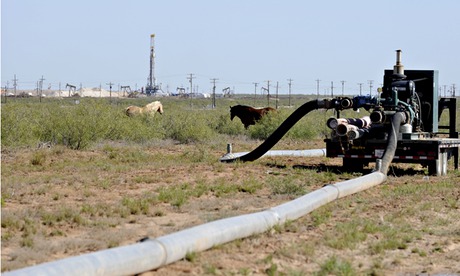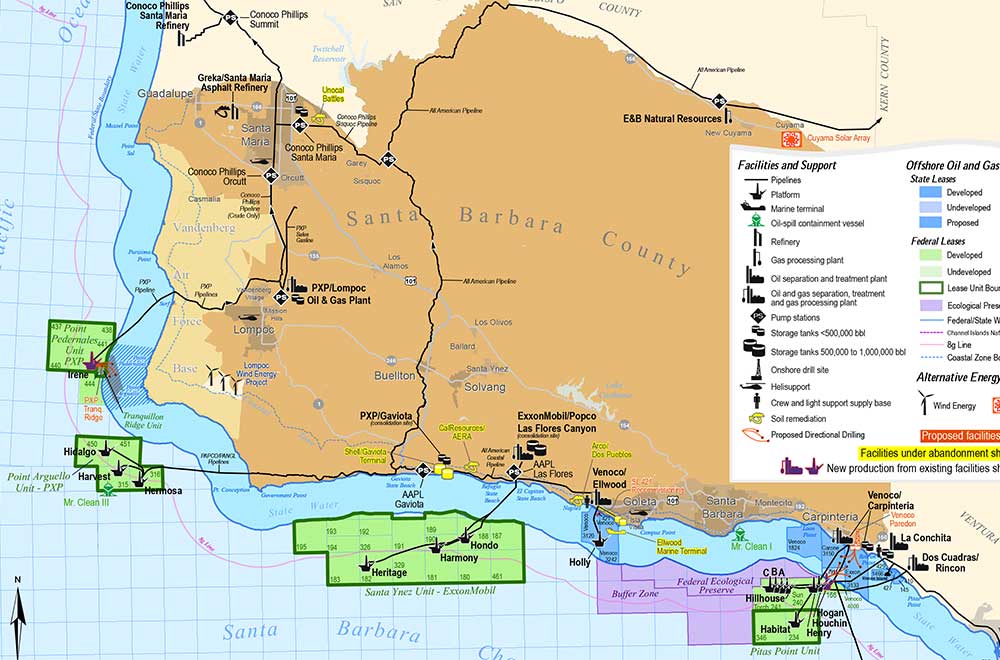http://insideepa.com/Inside-EPA-General/Inside-EPA-Public-Content/as-epa-eyes-oil-spill-rule-rewrite-citizens-coalition-steps-up-pressure/menu-id-565.html
YES I support the effort to review the use of dispersants, especially Corexit, and encourage placing limits on the amount of dispersants that can be applied. Some deep water benthic communities in the Gulf are still blanketed in this chemical, preventing growth of the most basic forms of life in the food chain. DV
Posted: January 17, 2014
EPA is preparing revisions governing the authorization of oil spill response agents, but citizen activists say even more changes are necessary to address how spill response agents interact with tar sands and other non-conventional fuels during spills, although they say pursuit of a broader overhaul will be an “uphill battle.”
The changes EPA is eyeing include revisions to the the National Oil and Hazardous Substances Pollution Contingency Plan’s (NCP) oil spill agent product listings, known as Subpart J, in response to a 2012 petition, as well as possible clarification of where and in what amount dispersants can be used as the result of ongoing mediation with environmentalists in pending litigation.
But prompted by recent spills of non-conventional fuels, a citizens activist coalition plans to soon ask the agency to take additional steps to address the efficacy and toxicity of spill response agents when applied to non-conventional fuels such as tar sands and oil-fracking fluid mixtures during inland spills, and not just in their use to treat heavy crude oil spills off the coasts, a toxicologist with the coalition says. The coalition also plans to ask EPA to create a public health mandate when considering responses to fuel spills.
The Citizens’ Coalition to Ban Toxic Dispersants, which has collected more than 3,000 signatures from citizen activists and regional environmental groups, filed the original petition to EPA in 2012, and the group expects to expand and update its petition soon.
The move could step up pressure on the agency at a time when environmentalists and others are closely watching for EPA’s proposal to change Subpart J, with activists hoping for significant changes in the wake of the Deepwater Horizon/BP 2010 oil spill disaster that released 210 million gallons of oil. Following the spill, BP used at least 1.8 million gallons of dispersants in the Gulf to break up the oil spill on the water’s surface. But environmentalists and some lawmakers heavily criticized the use of the petroleum-based dispersant Corexit. The action prompted lawsuits by Gulf Coast residents, workers and companies who claimed adverse health effects from their exposure to the dispersants.
“EPA has been dead in the water” on new policy for many years, one environmentalist says, attributing the lack of action to various causes: the Bush administration’s general policy positions, EPA’s traditional status-quo stance and the absence of any major oil spill accidents after the Exxon Valdez spill in 1989, up until the 2010 BP spill. But the source says there is now a window to make improvements.
“Everyone knows” that a “green” dispersant is needed, the source says. The question is: will that door, “which has been locked so long at EPA,” open? the source says.
EPA late last year gave notice in the Unified Agenda that it would propose revisions to Subpart J in February, although at press time it was unclear if EPA would be able to reach that deadline. An EPA spokeswoman says the changes are currently under senior EPA review. The rule may then have to go to the White House Office of Management & Budget for review before the proposal can be published in the Federal Register.
The revisions have been long-anticipated — with initial work started in 2001. One non-governmental organization (NGO) source notes the agency has failed to meet previous deadlines it has set, and the agency last fall said the revisions were not among its imminent priorities.
Under the Clean Water Act (CWA), EPA is required to develop a schedule identifying dispersants, and other spill mitigating devices and substances that may be used under the NCP and which waters and at what quantities they may be used, according to the Unified Agenda notice. The agency in the Unified Agenda says it is “considering revising Subpart J of the NCP to address the efficacy, toxicity, and environmental monitoring of dispersants, other chemical and biological agents, and other spill mitigating substances, as well as public, State, local, and Federal officials[‘] concerns on their authorization and use.”
The schedule is significant because, according to the coalition source, industry can use only those items listed on the NCP product schedule for spill response, although citizen activists note the Coast Guard effectively has a waiver that allows it to use any product, even if not listed on the product schedule. The CWA requires EPA to develop the NCP schedule of products that “may be used” to mitigate spills, also requiring EPA to identify the waters and quantities of dispersants and other chemicals that can be used safely, but EPA in a 2007 fact sheet notes that the product schedule “does NOT mean that EPA approves, recommends, licenses, certifies, or authorizes the use of the [Product Name] on an oil discharge. The listing means only that data have been submitted to EPA as required by Subpart J of the [NCP].”
EPA has been under continuing pressure from citizen activists and environmentalists to tighten its review of dispersants and response agents and is in mediation with environmentalists over litigation on the matter. While the case, which sought to force EPA to collect data on the appropriate locations for using dispersants and quantities that can be used in oil spills, was dismissed on procedural grounds last year by a lower court, environmentalists have appealed that ruling to the U.S. Court of Appeals for the D.C. Circuit. In Alaska Community Action on Toxics (ACAT), et al. v. EPA, environmentalists charge EPA was violating the NCP by failing to publish a schedule identifying spill control agents eligible for spill response, identifying the waters they may be used in, and identifying the quantities that may be used.
EPA’s Office of Inspector General (OIG) has also previously called for the agency to better assess risks posed by dispersants and better track those that are used (Superfund Report, Sept. 5, 2011).
The revisions already under review at EPA are expected to respond to the 2012 petition from the citizens coalition, which asked the agency to amend the NCP product schedule by creating a “delisting” process for removing products from the list that are failing to perform as expected, pose unacceptable health risks to workers, the public and environment or were discontinued by the manufacturer but are still stockpiled for disaster response; and act to immediately delist certain products. While EPA currently has the authority to remove a product from the list, it lacks an active delisting process, the NGO source says.
In addition, the petition asked EPA to require the use of mechanical containment and recovery as the primary response to oil spills, strengthen efficacy testing protocols, and update toxicity criteria and testing of products on the list.
“The emerging science from the BP Gulf oil disaster demonstrates the gross inadequacy of current regulations,” the coalition’s petition says. “Emerging science is confirming that products [that] were used in the BP disaster response, especially unprecedented amounts of dispersants, created more harm to humans and the environment than the oil release alone–yet these same dispersant products are stockpiled for future oil spill response. The EPA has both the authority and the duty to ensure a greater level of preparedness.”
The agency in a summary of its planned rule revisions says it is considering amendments to effectiveness and toxicity testing protocols used for response agents, as well as setting new effectiveness and toxicity thresholds for listing certain products on the schedule.
EPA in a Jan. 3, 2013, letter responding to the petition also notes the agency is considering modifying the procedures for authorizing dispersants’ use in response to oil spills,.
“The revisions being considered are intended to increase the overall scientific soundness of the data and the availability of information on dispersants and other chemical and spill mitigating substances used to respond to oil discharges, including on the efficacy, toxicity, long-term environmental impacts and on other concerns raised during the Deepwater Horizon spill and as a result of recent research,” it says.
The coalition plans to expand its petition to call on EPA to conduct efficacy and toxicity testing of all products on the schedule when applied to non-conventional fuels, prompted by recent tar sand spills and railcar explosive accidents carrying crude oil mixed with fracking fluids and what the coalition toxicologist says have been inadequate responses. Fracking fluids, for instance, are being used to aid in extracting light crude oil from the Bakken region of North Dakota, which creates the potential for volatile explosions, the coalition source says. Federal Department of Transportation regulators earlier this month issued a safety alert warning that a string of railcar derailments and resulting fires carrying crude oil from the Bakken region indicate that the type of crude oil being shipped may be more flammable than traditional heavy crude oil.
While the OIG has suggested EPA update the NCP based on lessons learned from the Deepwater Horizon/BP spill, it does not mention how non-conventional fuel spills such as the 2010 inland Enbridge tar sands oil spill in Michigan should prompt changes to the NCP, the source contends. The Enbridge tar sands pipeline spill released more than 1 million gallons of tar sands, with oil eventually flowing into the Kalamazoo River. The cleanup costs are estimated at $725 million. The source says the spill has resulted in the most costly per gallon spill response ever, and is still ongoing.
While the NCP currently only addresses conventional oil, EPA should broaden it to also cover tar sand spills, the source says, noting that the legal mechanism for including non-conventional fuels exists in the CWA’s language on dispersants and other spill response agents, contained in section 311(d).
In addition, the citizens coalition plans to ask EPA to create a public health mandate in its NCP revisions, to make public health a consideration in spill response and to include a feedback loop to determine whether there is a link between illnesses in the aftermath of spills and dispersants, according to the source.
The American Petroleum Institute (API), which represents the oil and natural gas industry, declined to answer specific questions about the upcoming regulatory revisions, the coalition’s petition, or whether the regulation should be broadened to include non-conventional fuels. An API spokesman, however, issued a statement, stressing the importance of safety and saying, “Dispersants are one of many tools used to protect people and the environment in the event of a spill, and they have proven to be safe and effective when used appropriately.”
In addition, the spokesman says: “America’s refineries are designed to process heavy crudes like those from Venezuela and Canadian oil sands, and dispersants, when used properly, are designed to address these and lighter crudes.” — Suzanne Yohannan
Originally published in the January 20, 2014 issue of Superfund Report.
2458802
Inside EPA Public Content, Vol. 28, No. 2
Special thanks to Richard Charter



